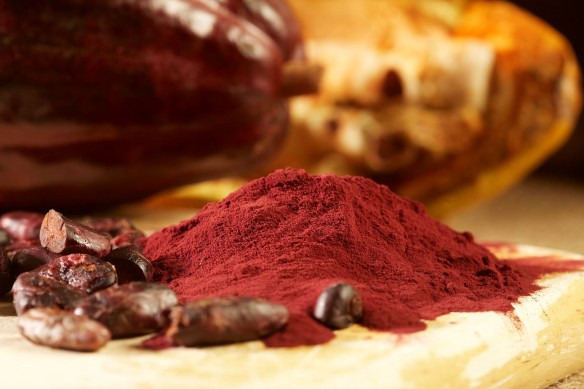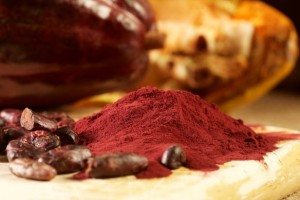-
Cocoa in your diet has tremendous health benefits
-
Buying powdered cocoa is a minefield and not as easy as it may sound.
-
The ultimate chocolate diet tips: Cocoa could be the chocolate taste without the calories if you prepare it correctly
Cocoa in your diet has tremendous health benefits
Recent clinical studies have shown that cocoa reverses memory decline and enhances the cognitive function of your brain.
Cocoa could reduce blood pressure, increase fat metabolism, increase levels of seratonin release, raise low-density lipoprotein levels (good cholesterol) and more. Cocoa activates the nitric oxide system in your body that improves blood flow and is healthy for your heart.
Cocoa improves your mood and reduces stress. Natural unsweetened cocoa has high levels of the flavonoids, epicatechin, catechin and gallic acid (at least 25% higher levels than those found in dark chocolate) Catechin reduces the levels of body fat and Epicatechin relaxes blood vessel walls, which lowers blood pressure and increases circulation. Gallic acid supresses the release of cytokines and histamines which reduces inflammatory and allergic responses. In traditional Chinese medicine, foods high in Gallic acid (gallnuts, sumac, witch hazel, tea leaves, oak bark) is also used to treat diabetes.
Buying powdered cocoa is a minefield and is not as easy as it may sound
There are four important factors to consider when choosing which brand of cocoa to purchase:
1. Calorie weight
Depending on brand this varies extremely widely from as little as 80 calories per 100 grams to 400 calories per 100 grams and more. (The LOWER the number, the better)
2. Amount of flavonoids
Some leading brands have as much as 5000mg per 100 grams, but there are cheaply imported brands with 10 times less flavonoids per 100 grams. (The HIGHER the number, the better)
3. Fiber content
Some brands have 10 grams of fiber per 100 grams but this number also varies greatly. (The HIGHER the amount, the better)
4. Cadmium, Lead and other pollutants
There is no safe level of lead in your diet. It impairs IQ and affects the ability to concentrate. Adults should probably not consume more than 10 micrograms of lead per day and as little cadmium (less than 5 micrograms per day) as possible. Certain brands of cocoa could contain lead, cadmium and other pollutants due to manufacturing, packing and shipping methods. Many pollutants are also absorbed by the cocoa plant that could come from pesticides and other sources of contamination. Ethical food products have to be tested and may require additional processing, which could increase the cost of these powdered unsweetened cacao products.
Do not to buy any product where product information is not readily available on that product label.
Different brands of cocoa have different calorie loads, fiber loads and amount of flavonoids. On average 1 gram of unsweetened cocoa powder contains 1 calorie (some cheap low quality brands could contain as much as 10 calories per one gram – it is very important to check your food labels!)
Ultimate chocolate diet tips
To each 200 grams of powdered coffee add 10 to 20 grams (depending on your own taste: as much as 50 grams) of unsweetened cocoa powder and mix well
When preparing a cup of this coffee there are three important things:
- Use only very hot boiled water
- Add boiling hot milk instead of cold milk
- Add some sweet but remember: The truth about sugar & The low down on sweetness
Add cocoa to your spices and condiments
- One gram of cocoa to each 5 grams of curry powder
- Cocoa powder with ground bay leaves, ground cloves and even with coriander
- Cocoa pairs well with garlic and pesto mixes
- Add a teaspoon of cocoa to your favorite tomato paste or to ketchup and chutneys
- Add cocoa powder to stews, soups, meat sauce or gravy and with your favorite hot breakfast porridge!
Where does dry cocoa powder come from?
Dry unsweetened Cocoa powder comes from a seed on a cacao tree. There is a soft part, inside the cocoa bean which is removed and crushed. Pressure is applied to remove the oils. Then it is dried and we have cocoa powder.
References:
- www.nature.com/neuro/press_release/nn1214.html
- www.mayoclinic.org/hdl-cholesterol/art-20046388
- www.ncbi.nlm.nih.gov/pmc/articles/PMC3022066/ (…Grapes and wine, cocoa and chocolate, black and green tea, and soy and soy-derived products, are among the most important sources of flavonoids in the human diet…)
- newsroom.cumc.columbia.edu/blog/2014/10/26/flavanols-memory-decline
- journals.lww.com/jhypertension/Abstract/2003/12000/Flavanol_rich_cocoa_induces_nitric_oxide_dependent.16.aspx (Conclusion: In healthy humans, flavanol-rich cocoa induced vasodilation via activation of the nitric oxide system, providing a plausible mechanism for the protection that flavanol-rich foods induce against coronary events.)
- www.ncbi.nlm.nih.gov/pubmed/15640470 (…catechins leads to a reduction in body fat…)
Advertising

All information provided for information & education purposes only. Nothing published on https://dietmy.com is intended as substitution for medical advice, diagnosis, or for any treatment.




